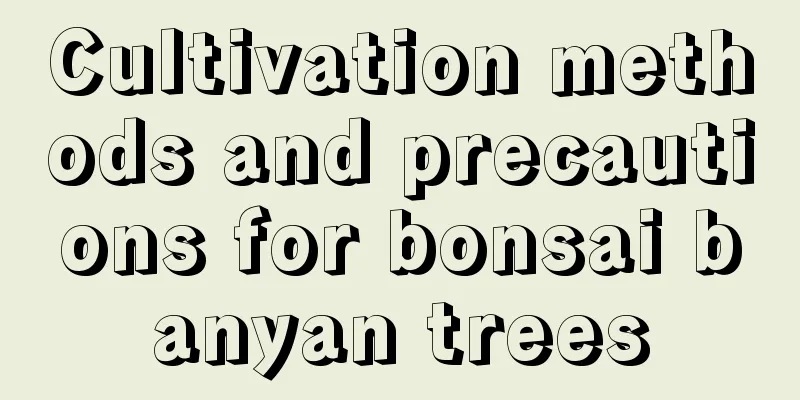Planting methods and techniques of Sunshine Rose grapes

|
Sunshine Rose Grape is a new grape variety, also known as "rose grape" or "pink grape". It has attracted much attention for its unique color and taste. Let’s talk about the cultivation methods and techniques of Sunshine Rose grapes. 1. Choose good land and good varieties 1. Site selection Sunshine Rose grapes prefer an environment with plenty of sunlight and good ventilation. Therefore, when choosing a site, try to choose a south-facing or southeast-facing slope to ensure that the grape vines can fully absorb sunlight. At the same time, the terrain should be slightly higher to facilitate drainage and avoid water accumulation that may cause root rot. 2. Seedling selection High-quality grape seedlings are the key to successful cultivation. When selecting seedlings, choose those with well-developed root systems, green leaves, and no diseases or insect pests. In addition, attention should be paid to the cold resistance and disease resistance of the seedlings to ensure that the grape vines can thrive. 2. Digging, fertilizing and planting 1. Digging a pit Depending on the size of the seedlings, dig a hole about 50 cm deep and 60 cm in diameter. When digging a hole, the topsoil and subsoil should be piled separately to facilitate subsequent backfilling. 2. Fertilization Spread a layer of well-rotted farmyard manure or organic fertilizer on the bottom of the pit, then backfill with a portion of the topsoil and mix it evenly with the fertilizer. This can provide sufficient nutrients for the grapevines and promote their growth and development. 3. Planting Place the seedling in the hole, making sure the roots are well spread out. Then backfill the soil and compact it lightly so that the seedlings are firmly combined with the soil. Finally, water thoroughly to make the soil fully moist. 3. Watering, fertilizing and pruning 1. Watering Sunshine Rose grapes like a humid environment, but also avoid waterlogging. During the growing season, water should be applied according to weather conditions and soil moisture. Generally speaking, watering every 3-5 days is sufficient. When encountering drought weather, you should increase the frequency of watering; when encountering the rainy season, you should pay attention to drainage and waterlogging prevention. 2. Growth fertilization Grapevines need adequate nutrients as they grow. In addition to the base fertilizer applied at the time of planting, top dressing should also be applied in time during the growing season. Generally speaking, it is sufficient to apply compound fertilizer or organic fertilizer once in spring and autumn each year. Before flowering and during the fruit expansion period, appropriate amounts of phosphorus and potassium fertilizers and foliar fertilizers should be applied to promote flower bud differentiation and fruit development. 3. Pruning Pruning is an important part of grapevine management. Pruning can adjust the tree structure, control branch growth, and promote flower bud differentiation and fruit development. When pruning in winter, you should cut away diseased and insect-infested branches, weak branches, and overcrowded branches; when pruning in summer, you should promptly pinch off the top, remove buds, and thin out flowers and fruits to maintain the balance of the tree and the quality of the fruit. IV. Prevention first, comprehensive management Although Sunshine Rose grapes are highly disease-resistant, they are still susceptible to some diseases and pests. Therefore, pest and disease control should be carried out during the planting process. Specifically, the following measures can be taken: 1. Strengthen field management: Enhance the disease resistance of grapevines through reasonable fertilization, watering, pruning and other measures; promptly remove diseased and insect-infested branches, fallen leaves and other sources of disease and insects; keep the orchard clean and hygienic. 2. Physical control: Use yellow boards, insecticidal lamps and other physical methods to lure and kill pests; use manual or mechanical methods to capture pests; set up protective nets around the orchard to prevent pest invasion. 3. Biological control: Use biological factors such as natural enemy insects and microbial agents for control; plant some beneficial plants such as flowers and vegetables in the orchard to increase biodiversity and improve the stability of the ecosystem. 4. Chemical control : When pests and diseases occur seriously, chemical control methods can be adopted, but you must pay attention to choosing low-toxic, high-efficiency, and environmentally friendly pesticides and apply the pesticides strictly according to the instructions to avoid pollution to the environment and impact on human health. That’s it |
<<: When is the best time to plant potatoes?
>>: Planting methods and management points of Giant Rose grapes
Recommend
How to pick honeysuckle
Picking time The flowering period of honeysuckle ...
What are the varieties of Podocarpus
Podocarpus brevifolia A small tree or shrub with ...
How to prune Kalanchoe in autumn
1. Pruning methods 1. Growth period: Generally, a...
How to prevent gardenia root rot, and how to deal with root rot
1. Methods to prevent root rot 1. Watering: It ne...
How to grow dancing orchid
1. Soil When growing dancing orchids, you need to...
Why does the June snow rot and die?
The reason for the root rot of June snow - wateri...
Diseases and Pests of Artemisia strychnifolia and Their Control
Anthracnose damage The cause of anthrax is Bacill...
When is the right time to plant strawberries?
Best time to plant strawberries Strawberries can ...
How to grow daffodils on the balcony, what should you pay attention to
1. Maintain light Daffodils love light very much....
The Flower Language and Legend of Amaryllis
Introduction to Amaryllis Name: Amaryllis Other n...
Does Staghorn Begonia prefer shade or sun?
Does Staghorn Begonia prefer shade or sun? Stagho...
When does chrysanthemum bloom?
Flowering period of chrysanthemum The flowering p...
How to grow spider plants more vigorously
Chlorophytum growing conditions Chlorophytum like...
When is the best time to plant peppers?
Peppers prefer warm climates, and their optimal g...
The difference between fake mint and real mint
1. Leaf Difference The leaves of false mint are r...









